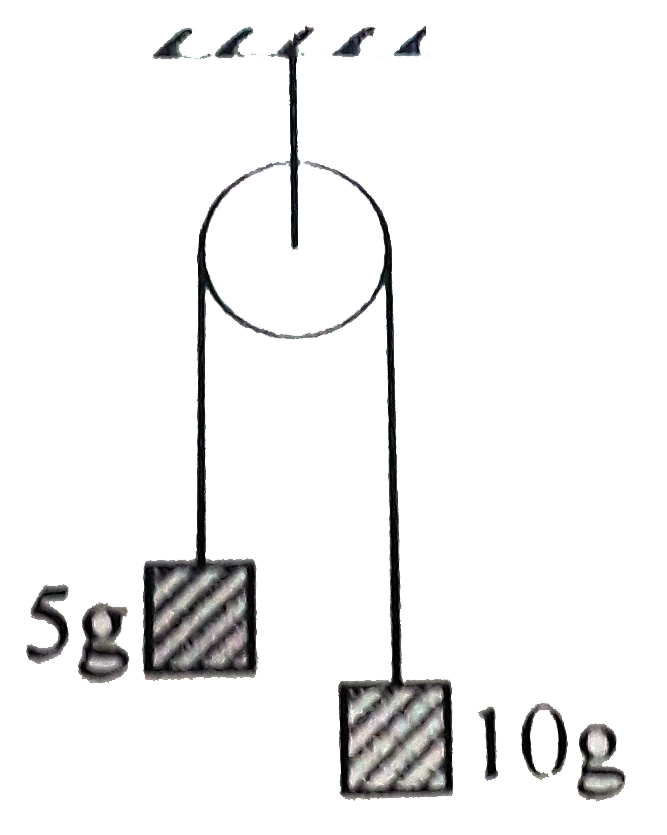The potential difference that must be applied to stop the fastest photoelectrons emitted by a nickel surface , having work function 5.01eV , when ultraviolet light of 200nm falls on it , must be
2.4 V
– 1.2 V
) – 2.4 V
1.2 V
The correct Answer is:B
hv=ϕ0+eV0 where hv=124002000=6.2eV
⇒V0=6.2−5.01=1.19≈1.20V
Topper's Solved these Questions
- NEETBook:NEET PREVIOUS YEAR (YEARWISE + CHAPTERWISE)Chapter:NEETExercise:MCQ
Explore 78 Videos
- NEETBook:NEET PREVIOUS YEAR (YEARWISE + CHAPTERWISE)Chapter:NEETExercise:MCQs
Explore 613 Videos
- NEETBook:NEET PREVIOUS YEAR (YEARWISE + CHAPTERWISE)Chapter:NEETExercise:MCQs
Explore 613 Videos
- MOTION IN TWO AND THREE DIMENSIONBook:NEET PREVIOUS YEAR (YEARWISE + CHAPTERWISE)Chapter:MOTION IN TWO AND THREE DIMENSIONExercise:All Questions
Explore 47 Videos
- NEET 2020Book:NEET PREVIOUS YEAR (YEARWISE + CHAPTERWISE)Chapter:NEET 2020Exercise:All Questions
Explore 45 Videos
Similar Questions
The damping force on an oscillator is directly proportional to the velocity. The units of the constant to proportionality are
View SolutionTwo masses as shown are suspended from a massless pulley. Calculate the acceleration of the system when masses aere left free:

View SolutionTwo masses as shown are suspended from a massless pulley. Calculate the acceleration of the system when masses aere left free:

View SolutionThe x and y coordinates of the particle at any time are x=5t−2t2andy=10t respectively, where x and y are in meters and t in seconds. The acceleration of the particle at t=2s is:
View SolutionLight with an average flux of 20Wcm2 falls on a non-reflecting surface at normal incidence having surface area 20cm2. The energy received by the surface during time span of 1 minute is:
View SolutionThe work function of a metallic surface is 5.01 eV. The photoelectrons are emitted when light of wavelength 2000A falls on it. The potential difference applied to stop the fastest photoelectrons is
View SolutionThe potential difference that must be applied to stop the fastest photoelectrons emitted by a nickel surface , having work function 5.01 eV , when ultraviolet light of 200 nm falls on it , must be
View SolutionWhat potential difference must be applied to stop the fastest photoelectrons emitted by a nickel surface under the action of ultraviolet light of wavelength 2000Å? The work function of nickel is 5.01 eV.
View SolutionThe work function of the nickel is 5 eV. When a light of wavelength 2000 Å falls on it ,it emits photoelectrons in the circuit .Then, the potential difference necessary to stop the faster electrons emitted is (Given ,h=6.67×10−34J−s)
View Solutionनिकिल पृष्ठ जिसका कार्य-फलन 5.01 eV है, से निकलने वाले तीव्रतम फोटो इलेक्ट्रॉन (फोटॉन) को रोकने के लिये आवश्यक विभवान्तर, जब उस पर 200 nm का पराबैंगनी प्रकाश आपतित होता है, होगा
View SolutionThe work function of a metallic surface in 5.0/eV. Photoelectrons are emitted when light of λ=2000Å falls-on it. The P.D. to stop fastest photoelectrons is :
View SolutionThe potential difference that must be applied to stop the fastest photoelectrons emitted by a nickel surface, having work function 5.01 eV, when ultraviolet light of 200 nm falls on it, must be
View Solution200 nm का पराबैंगनी प्रकाश पड़ने पर 5.01 eVकार्य - फलन वाले निकल पृष्ठ द्वारा उत्सर्जित तेज फोटो - इलेक्ट्रोनो को रोकने के लिए जो विभवांतर लगाया जाना चाहिए , वह है
View SolutionUltraviolet light of 200 nm wavelength is incident on nickel surface having work function of 5.01 eV.Potential difference of ………
Volt should be applied to stop electron emitted with maximum speed.
View SolutionWhat P.D. must be applied to stop the fastest photo electron emitted by a nickel surface when illuminated by ultraviolet light of wave length 2000∘A. The work function of nickel is 5 eV
View SolutionThe work function of a metallic surface is 5.01 eV. The photoelectrons are emitted when light of wavelength 2000A falls on it. The potential difference applied to stop the fastes photoelectrons is [h=4.14×10−15eVs]
View Solution
